
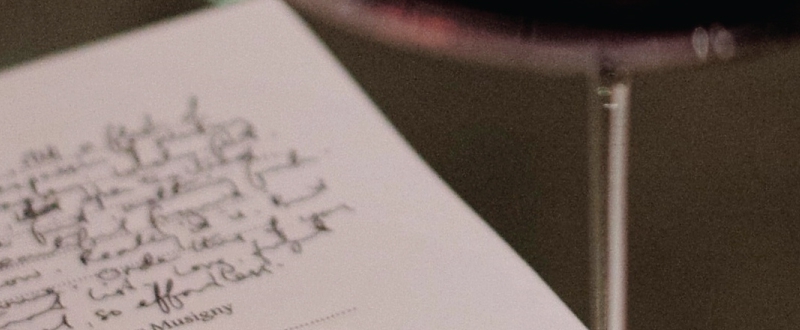
© Alexandria Rae Cubbage, 23rd July 2019
Last Wednesday, twelve of you joined trained Sake professional, Micky Chan, and me in our shop for a Sake and Wine Pairing Dinner. We asked Chef Peter Teo of Bistro du Vin to prepare a five-course menu, and Micky and I designed pairings for each course. The idea behind this dinner was to broaden our understanding of flavours and beverage options when pairing with food.
In deciding on the wine pairings for each dish, I considered the following factors about the food:
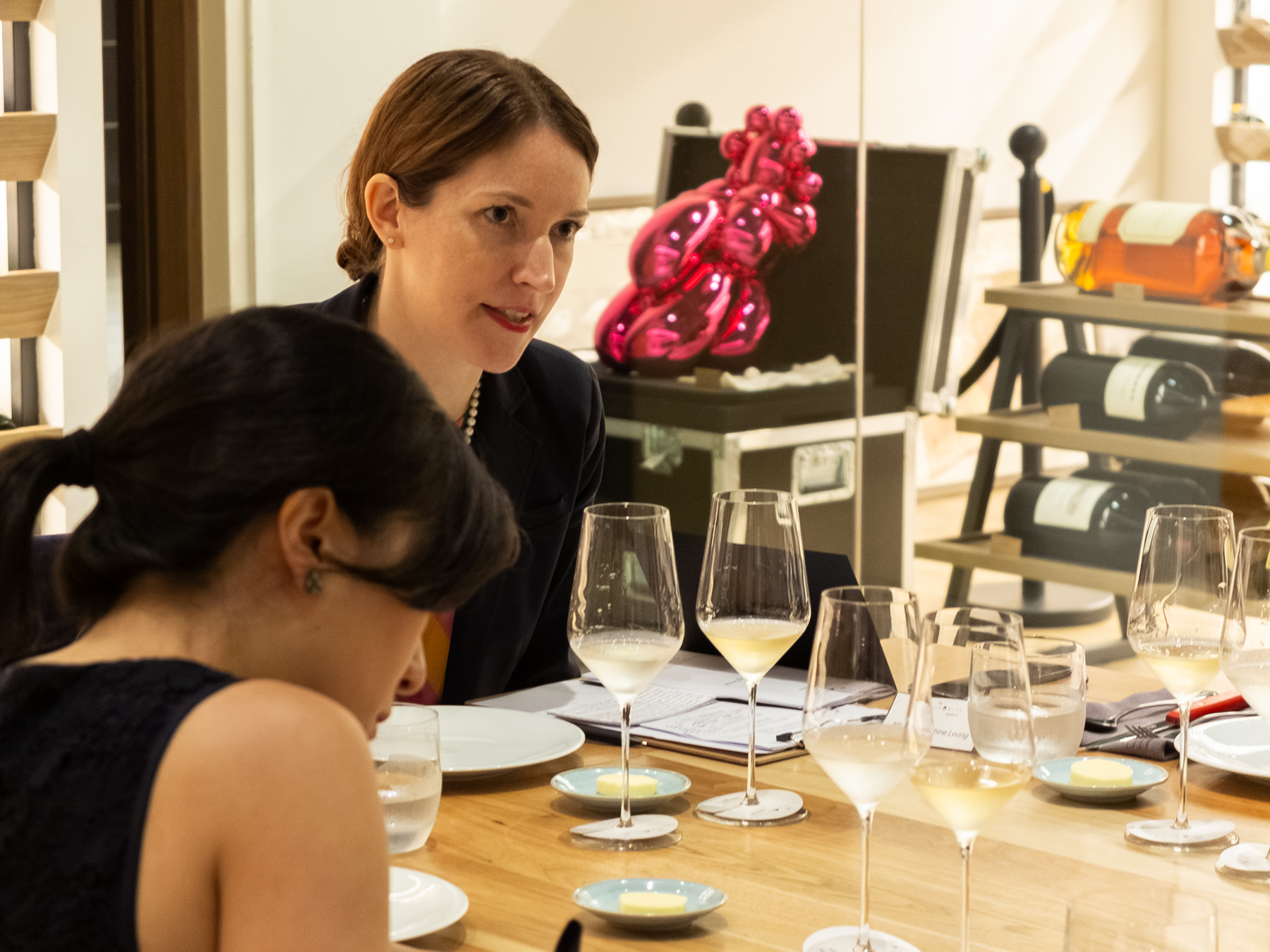
And for the wines, I considered the following factors:
Micky explained that in putting together his pairings for the evening, his focus was on the texture of the sakes. He pointed out that sake isn’t a beverage with high acidity; rather dishes with acidity can enhance the flavour notes of a sake.
Micky also showed us how temperature affects the taste of sake. He brought in a device for warming the water temperature like chefs use for sous-vide. For the fourth sake in the pairing, Micky served it at room temperature and also warm. We were able to experience how warming sake creates greater intensity in terms of concentrated flavour, richness and alcohol.
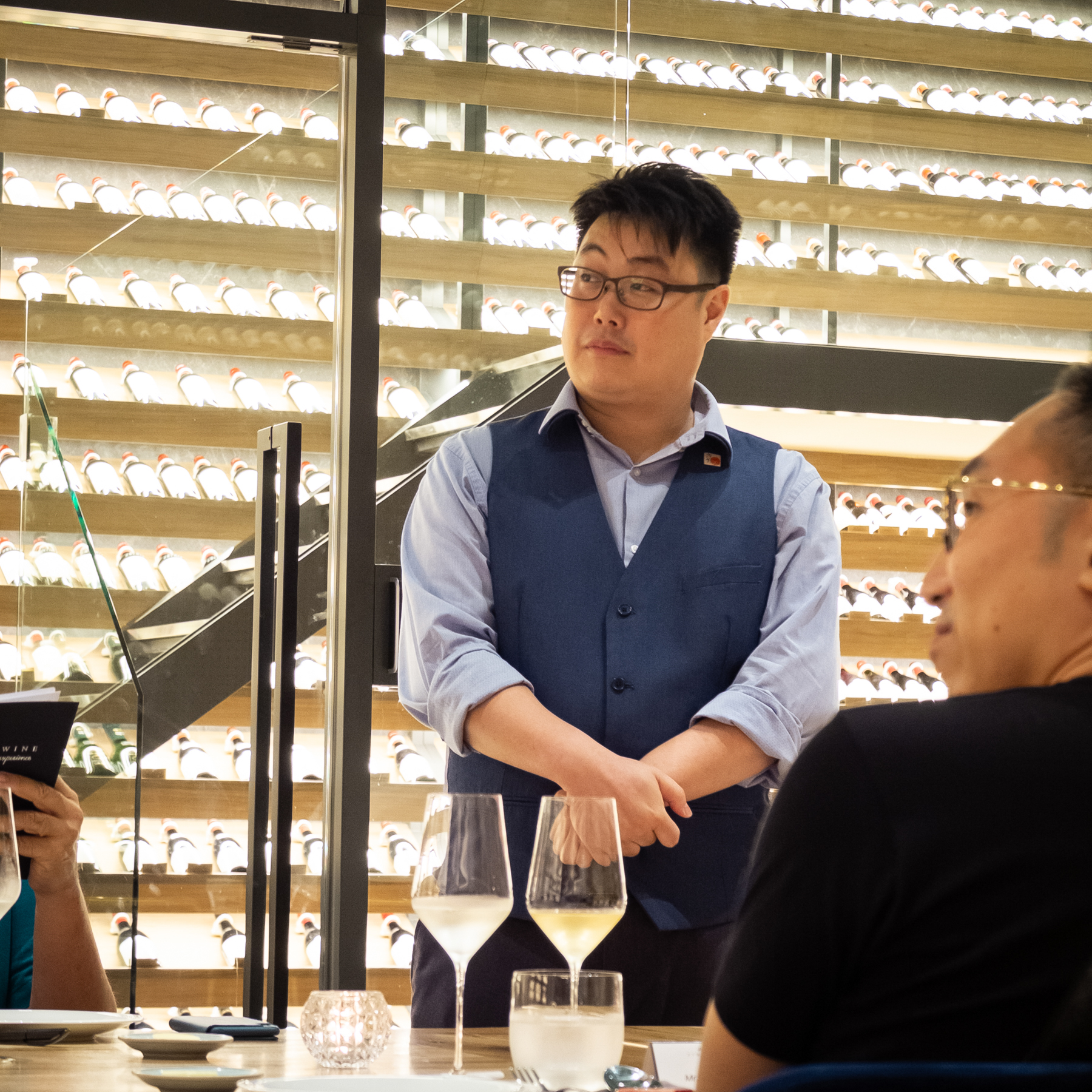

南部美人 AWA Sake (Nanbubijin AWA Sake)
2014 Domaine Arnaud Lambert - Saumur Blanc 'Coulée de Saint-Cyr'
Grilled Maine Lobster, Cold Angel Hair, Konbu
Most people had never had a sparkling sake before and really enjoyed Nanbubijin AWA Sake. Micky explained that this sparkling sake is quite special as it’s made in the Champagne method. It was also the welcome sake for the recent G-20 Summit. Micky explained that the area where this sake comes from is very cold and gets lots of snow. The group especially liked the cold angel hair pasta and Konbu with the Nanbubijin AWA Sake.
I chose a Chenin Blanc from Saumur in the Loire Valley to pair with this dish. When I tasted the grilled Maine Lobster, cold angel hair and Konbu what stood out was the charred, earthy flavours of the lobster, the crustacean broth and the use of the Sherry vinegar; these were the elements I focused on in creating this pairing. The wine has aromas and flavours of golden delicious apple, lemon and lime citrus notes and an earthy minerality. The delicate floral and fruity notes of banana and papaya that were present in the sparkling sake proved to be a better match for the Konbu in the pasta. While some preferred the 2014 Domaine Arnaud Lambert Saumur Blanc ‘Coulée de Saint-Cyr’ with the grilled Maine Lobster on its own, overall for the dish the sake won.
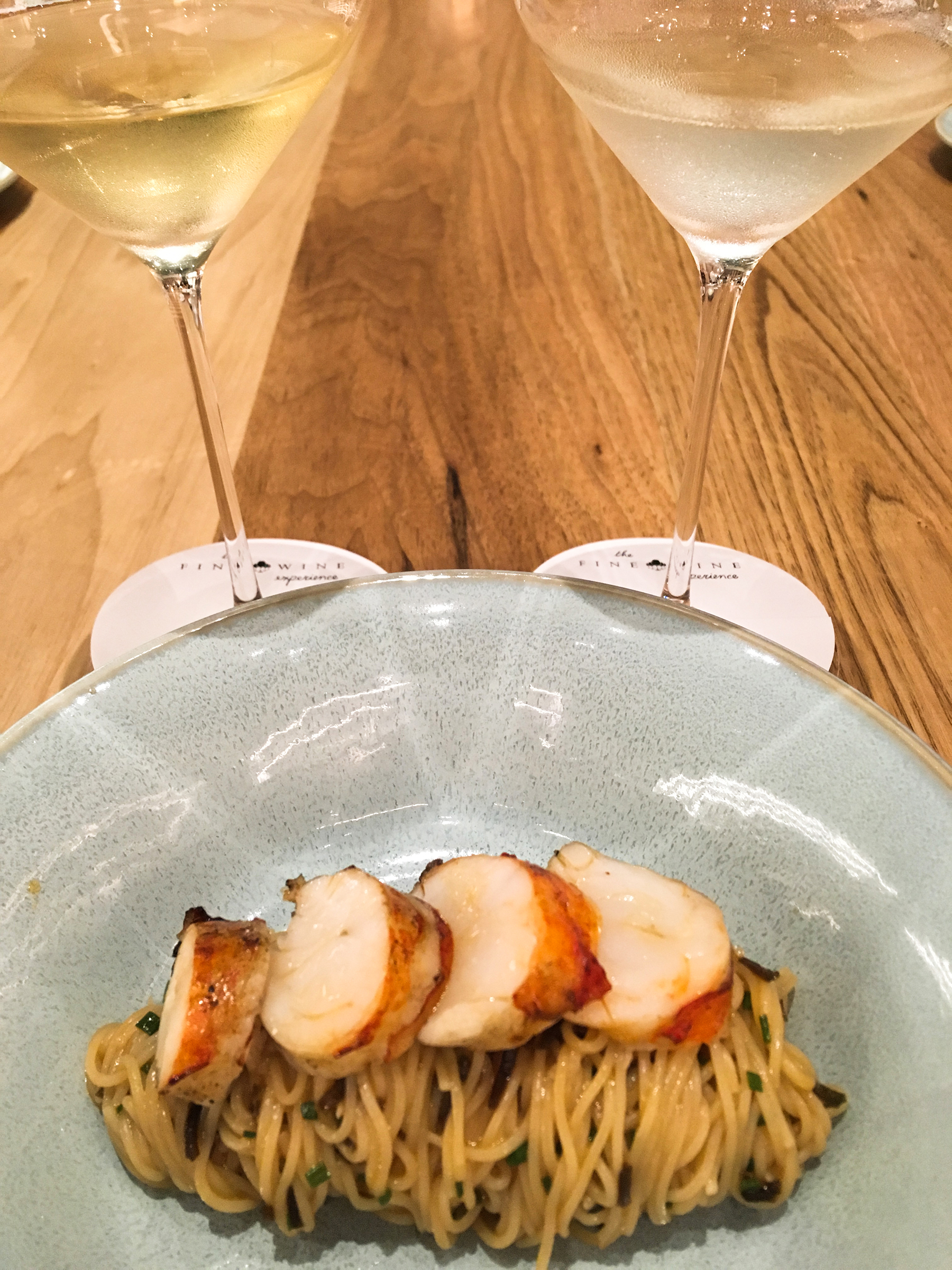
黑龍 龍大吟釀 (Kokuryo Ryo Daiginjo)
1986 Maximin Grünhaus - Abtsberg Spätlese
Duck Rillette, Herbs Salad, Toast
For the second pairing Micky chose a sake from Fukui which he explained is an area that has a lot of umami qualities in their food. This specific brewery, Kokuryo, is located a bit more inland, almost at the start of the river. Water and rice quality are both key to making good sake. The Kokuryo Ryo Daiginjo is made from Hyogo Special Grade Yamadanishiki, a very famous rice used for sake brewing. Micky shared that he selected this sake for the duck rillette and herb salad because he wanted a sake with a silky and smooth texture with a little bitterness and power at the end.
In terms of the wine, I chose an aged Spätlese from a vintage known for producing Rieslings that are less sweet and fruit-driven but more focused on herbal and earthy notes. When I tasted the dish to prepare for this dinner, the elements that stood out the most were the fresh herbal notes from the chervil, parsley, dill and chives along with the fatty richness of the duck rillette. I wanted a wine to work with these herbal aromas and flavours and with refreshing acidity to cleanse the palate. The 1986 Maximin Grünhaus - Abtsberg Spätlese was the favourite pairing for this dish, and this combination was the overall favourite of the dinner.
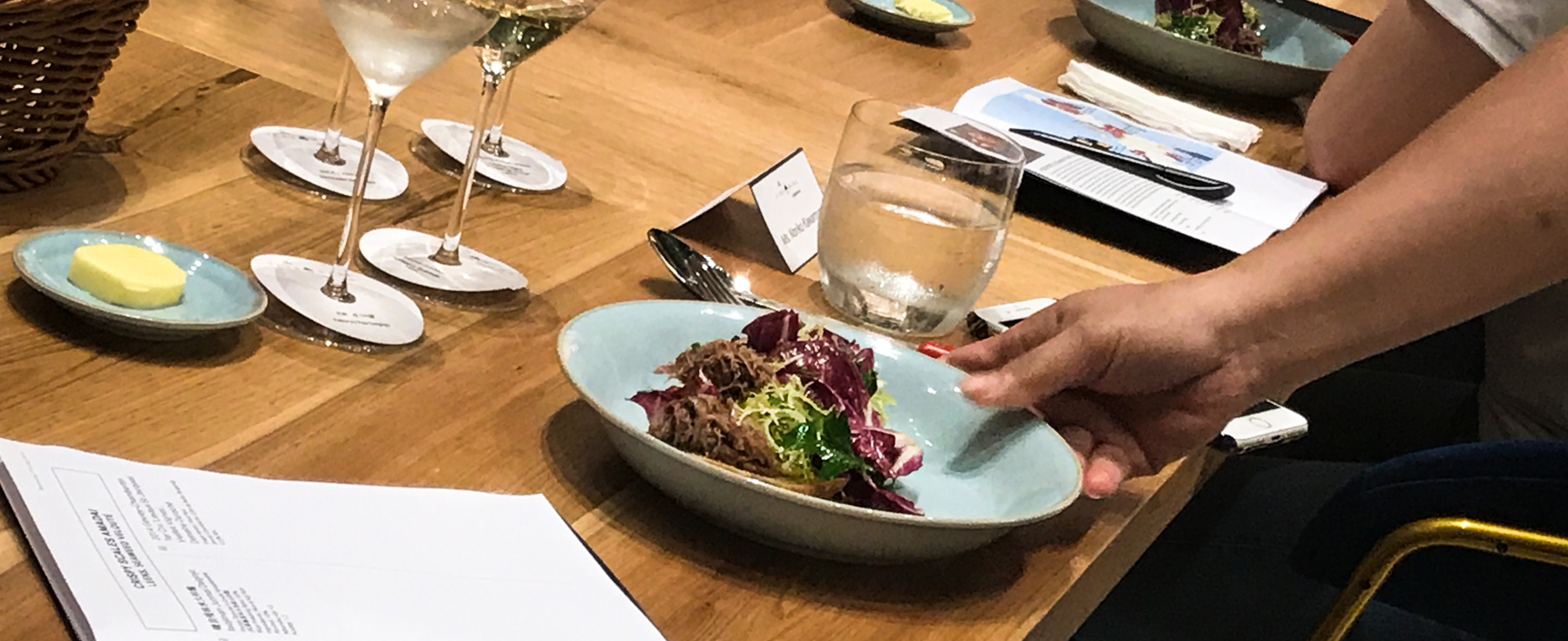
磯自慢純米大吟釀 (Isojiman Junmai Daiginjo)
2014 Domaine Duroché - Gevrey-Chambertin 1er Cru 'Lavaux St.-Jacques' Vieilles Vignes
Crispy Scales Amadai, Leeks, Seaweed Velouté
The third sake used in the dinner is from Shizuoka prefecture, and in this area they pair their sakes with seafood. Micky explained that the water is softer here with more minerally qualities. The Isojiman Junmai Daiginjo is the entry level sake for this brewery. Micky explained that he chose this sake because it has a stickier texture and more concentration of sweetness that he felt would pair well with the Amadai.
I chose 2014 Domaine Duroché Gevrey-Chambertin 1er Cru ‘Lavaux St.-Jacques Vieilles Vignes’ to pair with the Amadai. When I tasted this dish to prepare the pairing, onion, herbal and earthy notes stood out. The base of the velouté is dashi broth. The 2014 vintage is a more classic Burgundy vintage, and it has vibrant acidity with herbal notes that I felt would work well with the leek and seaweed velouté. This wine also has perfumed floral aromatics on the nose with cranberry, delicate red berry and cherry notes as well as earthy minerality of crushed autumn leaves. While several of you really enjoyed the wine with the sauce, others preferred the wine with the fish on its own without the sauce. Many were surprised to have a red wine pair well with fish and were also surprised to taste a young Burgundy that matched well. The overall preference for this dish was the Isojiman Junmai Daiginjo as it seemed to meld right in with the Amadai, leeks and seaweed velouté and highlighted the natural sweetness of the fish.
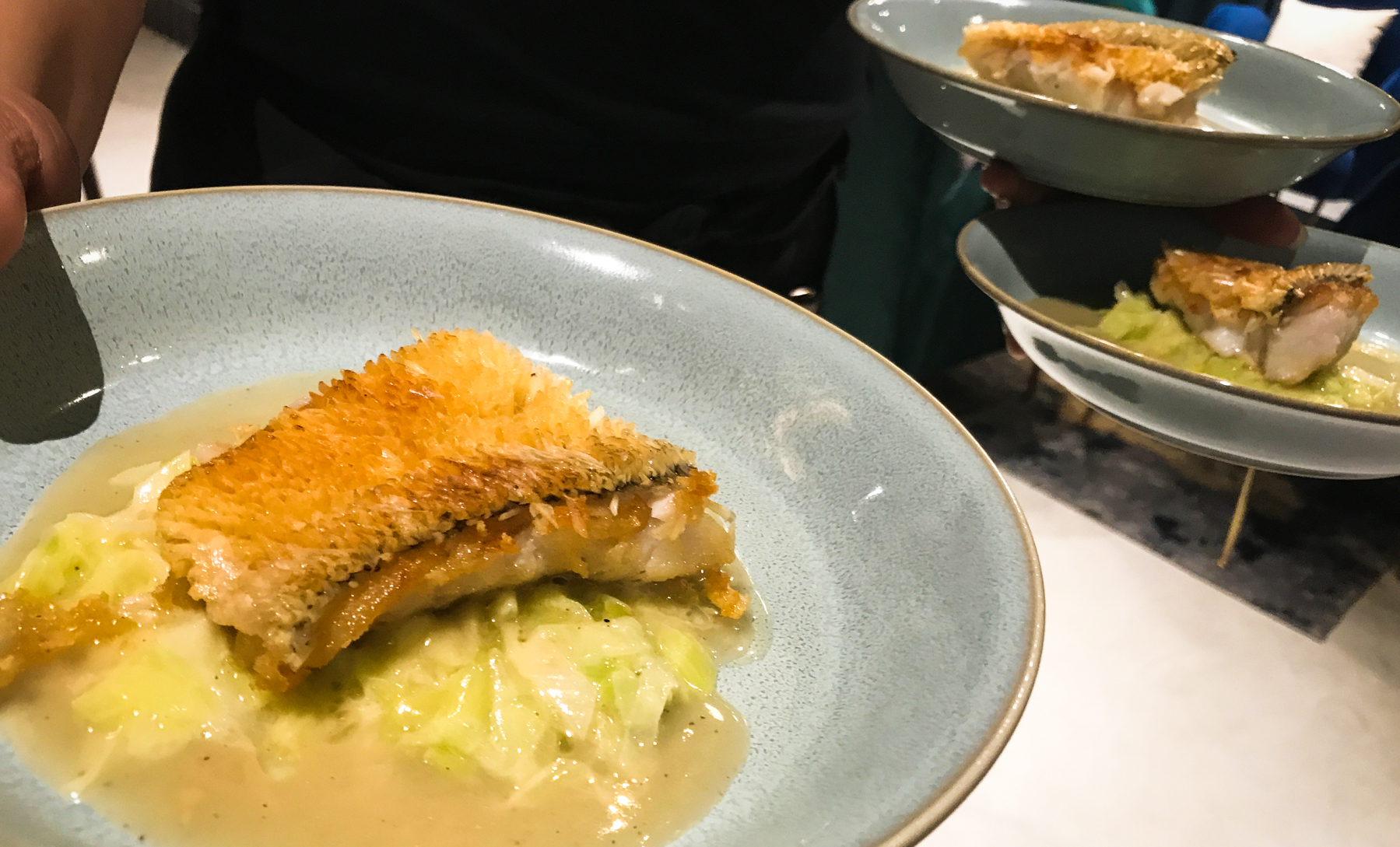
田村生酛純米吟釀 (Tamura Kimoto Junmai Ginjo)
2015 Château Montviel
Char-Grilled Australian Wagyu Bavette (9+ marbling), Watercress Salad, Horseradish
Micky explained that he chose the Tamura Kimoto Junmai Ginjo sake to pair with the beef because of the sake’s soft and creamy texture, its hints of oxidation and its flavours of mushroom, Konbu and earthy notes. Even in the glass, the colour had more yellow tones. Micky described that this sake is made in the traditional method called Kimoto, so the lactic acid is naturally derived; the sake is relatively higher in acidity. This brewery uses their own rice to make the sake. Micky poured this sake first at room temperature, and then he served it warm. When served at room temperature, the sake showed aromas of mushrooms, forest floor, and earthy notes. Then, when warmed those flavours intensified with a smoky-like note brought to the sake as well as it feeling more alcoholic and heavier on the palate. The sake highlighted the earthy flavours in the beef, and most were surprised to have a sake that could pair well with Australian Wagyu.
For the wine, I chose a 2015 Pomerol – Château Montviel. When I tasted the beef, I found it overall to be quite powerful and full in flavour with fatty richness. The char-grilled preparation on the beef intensified its flavour and earthy meatiness. This wine is full-bodied with silky tannins to cut through the richness of the beef with strong flavours of dark chocolate, cassis, dark raspberry, green pepper and herbal thyme notes that complemented the beef and watercress salad and horseradish well. For this pairing the overall favourite was the wine.
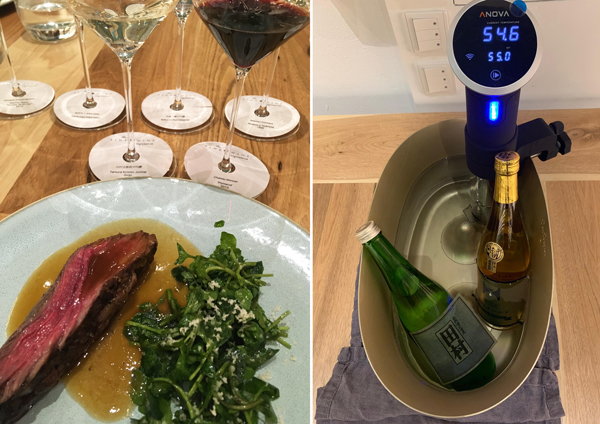
麒麟本釀造熟成古酒 (Kirin Aged Koshu)
2009 Château Climens, from half bottle
Crème Brulée
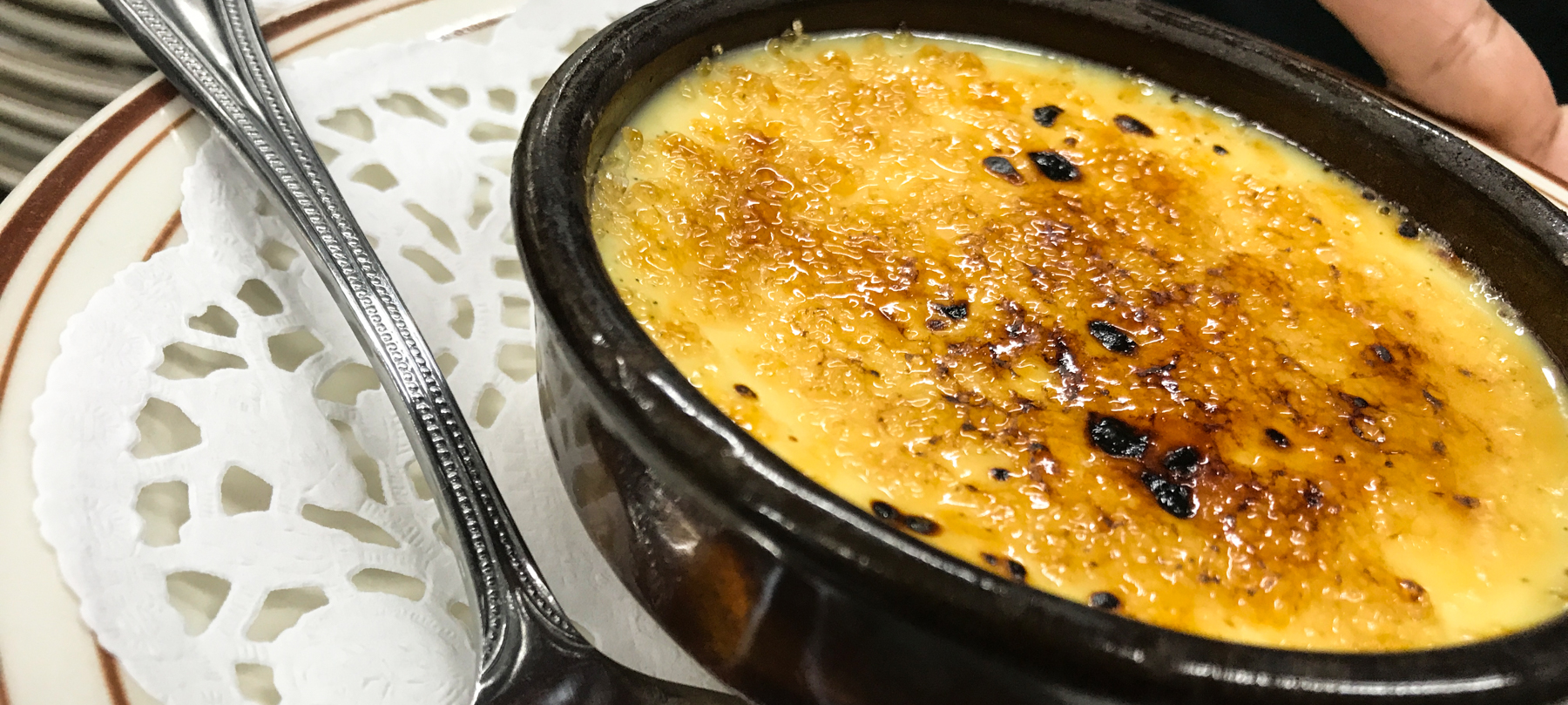
For the crème brulée, Micky chose an aged sake and served it warm. He wanted to bring out the sweeter notes in the sake and create greater richness on the palate to match the flavour and texture of the dessert. The Kirin Aged Koshu is a blend of 7 year old and 16 year old Koshu. The sake highlighted the earthy and nutty notes in the bruléed sugar topping and also complemented the eggy custard well in terms of the body. However, the sake wasn’t quite sweet enough, so the Barsac was the favourite for this dish. But, most had never had an aged sake and enjoyed this one.
When I tasted the crème brulée to prepare the pairing, what stood out was the caramelization and burnt sugar note. The egg custard underneath wasn't super sweet and had a real egg flavour to it. In pairing with this dessert, I wanted a wine with sweet spice notes like vanilla and cinnamon. I also wanted something not overly rich that would have a bit of lively fruit to complement the egg custard much like a fresh fruit tart with custard at its base. I wanted the wine to add another element to the crème brulée beyond just complementing it, so I selected a youthful Barsac, the 2009 Château Climens. It’s made from 100% Semillon and showed flavours of honeysuckle, vanilla, cardamom spice, burnt sugar and apricots; the wine was youthful and bright in flavour providing lift to the dessert. The 2009 Château Climens was the preferred pairing with this dish and a favourite wine of the evening.
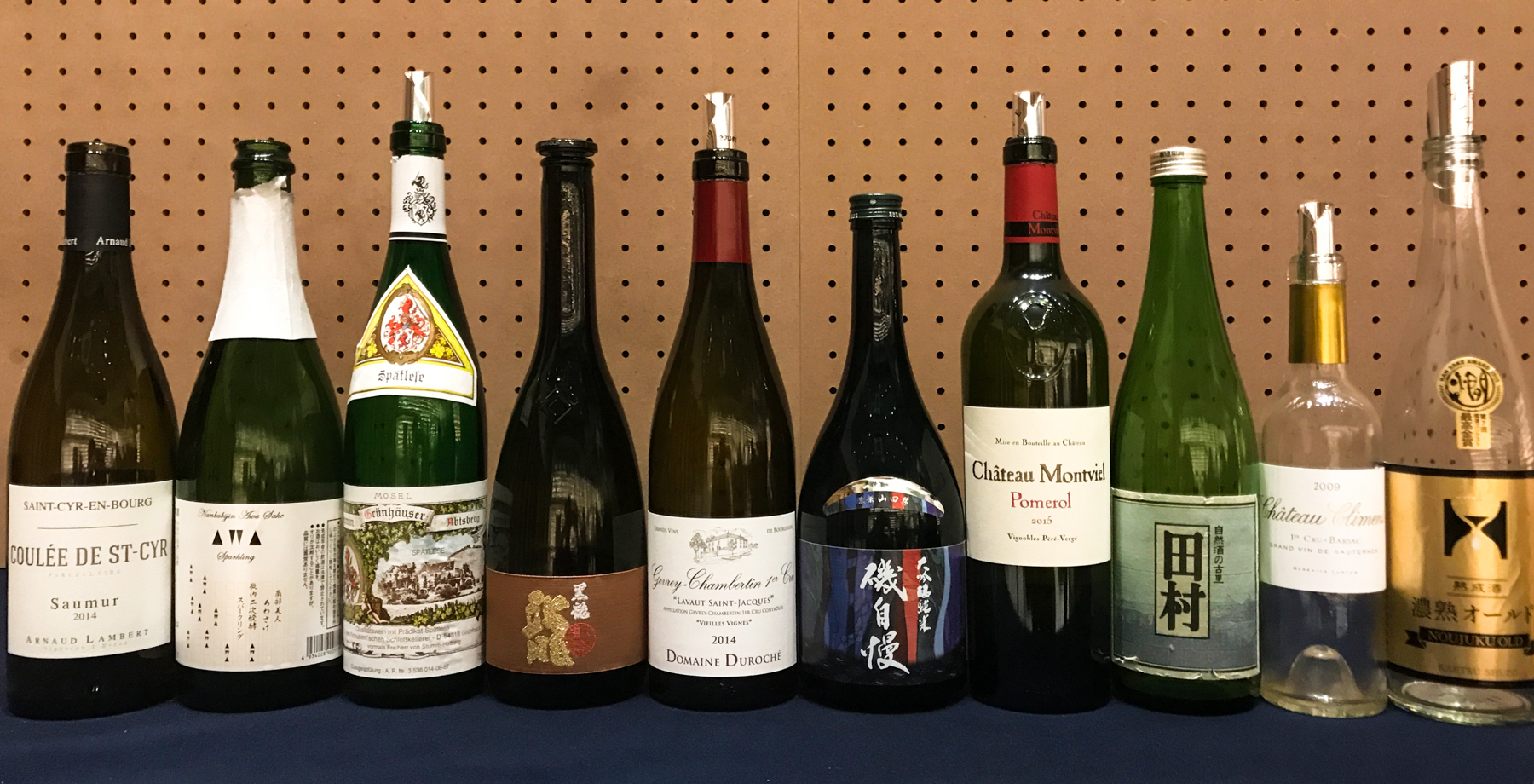
Thank you to everyone who joined Micky and me last Wednesday. I hope you enjoyed the pairings and increased your appreciation of sake as a pairing for more than just Japanese food. Several of you requested version 2.0, so Micky and I will work on that for the fall. And perhaps, Indian food next time - stay tuned. Until then, I hope you enjoy creating your own pairings. If you want to use some of the sakes from our list or wines from our Sake and Wine Pairing Dinner, check out our list below.
